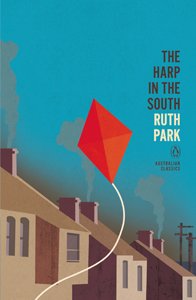 Words cannot explain how much I
loved this amazing piece of work by Joyce!
I was astounded and flabbergasted by his knowledge and use of
language.
Words cannot explain how much I
loved this amazing piece of work by Joyce!
I was astounded and flabbergasted by his knowledge and use of
language.
The structure of Ulysses is based
on Homer’s The Odyssey, which I did
read first, however without my study guide I would have missed an awful lot of
the references, some of which were so clever that they were hilarious. It is definitely beneficial to read The Odyssey first to fully appreciate
the skill involved in creating the structure for Ulysses.
It is also beneficial to read A Portrait of The Artist as a Young Man
to understand the character of Stephen Dedalus.
This I also did, and loved it, although it was heartbreaking in places.
Ulysses is set in Dublin
and is basically one day in the life of Leopold Bloom, an Irish Jew (this in
itself has many connotations which I won’t go into as the Study Guides describe
it so much better than I). Bloom is a
bit of a loner, he’s on the outside of his group of friends, and he’s a
cuckold. He is however a very caring and
gentle man, who dearly misses his son Rudy who died in infancy. During the course of the day he finds himself
concerned about Stephen Dedalus and tries to be a father figure to him, and
after a challenging evening keeps him out of trouble.
Molly Bloom is Leopold’s
voluptuous operatic wife, who is having an affair with the director of her
theatre group. The affair is no secret,
and on the day that she is expecting her lover Leopold ensures that he fills
his day and evening away from home.
The events are mundane in
themselves, a funeral, a visit to the newspaper office, a trip to the pub, a
walk on the beach (where Leopold undertakes a lewd act), a visit to the ‘red
light’ district (keeping an eye on Stephen) and eventually home again into the bed
which is still warm from Molly’s antics.
The wonderful thing about this
work is how it is presented. First of
all there are so many things that need to be kept track of (ie the lemon
scented soap in Bloom’s trouser pocket which he buys in the morning, the
outcome of the local horse race, and the various people he interacts with) as
they crop up throughout the novel. By
various devices we learn about the history of Dublin
and Ireland , its notorious
figures (real and fictional) and politicians, along with the general mood of
the day towards current events and Ireland ’s
stance with England .
The novel is written in many
styles which, if read without a study guide, would be an impossible task to
understand. Once you realise what Joyce
is trying to achieve within the style you marvel at his cleverness and revel in
the words. Such styles include one
section which demonstrates the evolution of the English language from stylised
Latin to Dublin
slang. Truly amazing! One part is
written in the style of various prose such a newspaper accounts, diarists, sensationalist
novelists, romantic novelists etc and another section is written like a play
(the events in Night Town) etc.
But, for me the most beautiful sections
of Ulysses were those written as a
stream of consciousness. They were
incredible, and made me think about the way that my own thought processes work
and yes, like in the book, they do jump around and are unfinished.
The last section is written as
Molly’s stream of consciousness so that we finally get to see her point of view
and why she is having an affair. At
first she seems to despise Leopold, but by the end you realise she does love
him dearly and that realisation is the most beautifully written passage in the
whole novel.
Ulysses is without doubt the most challenging book I’ve read since
Thomas Pynchon’s Mason & Dixon. It took me a good five months to complete
with the assistance of a study guide, reading half an hour each morning before
work when I could guarantee no interruptions and no danger of falling asleep
which always happens when I read in bed! I finished it late last year but I
have been ruminating on it ever since, still trying to get my head around what
I have experienced, and I know that I will never read anything like it ever again.
Maxine
